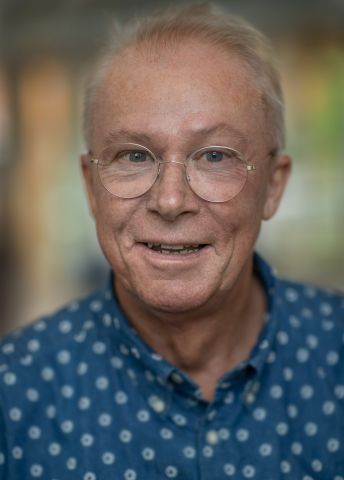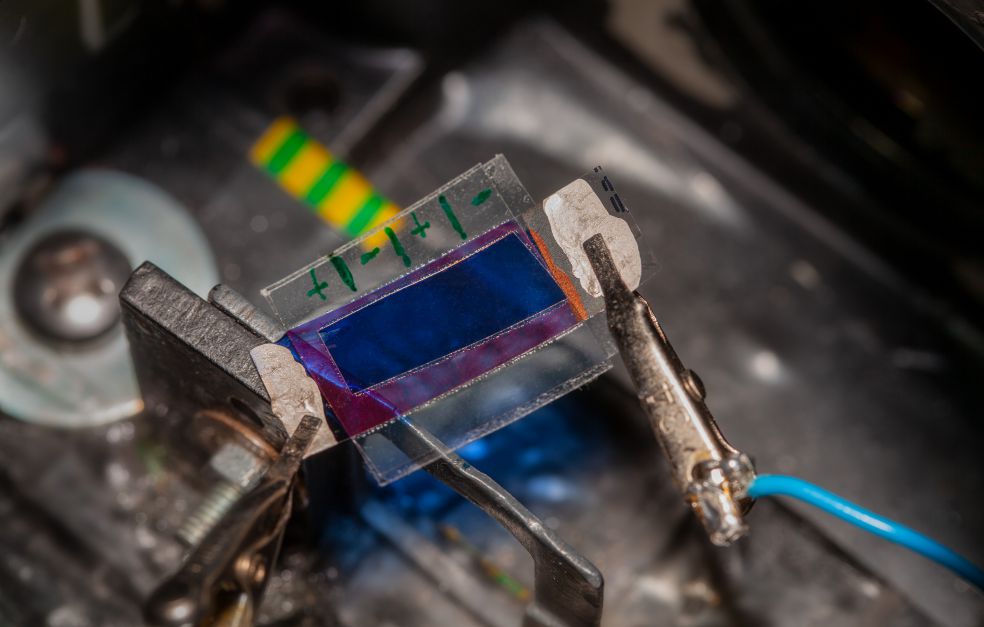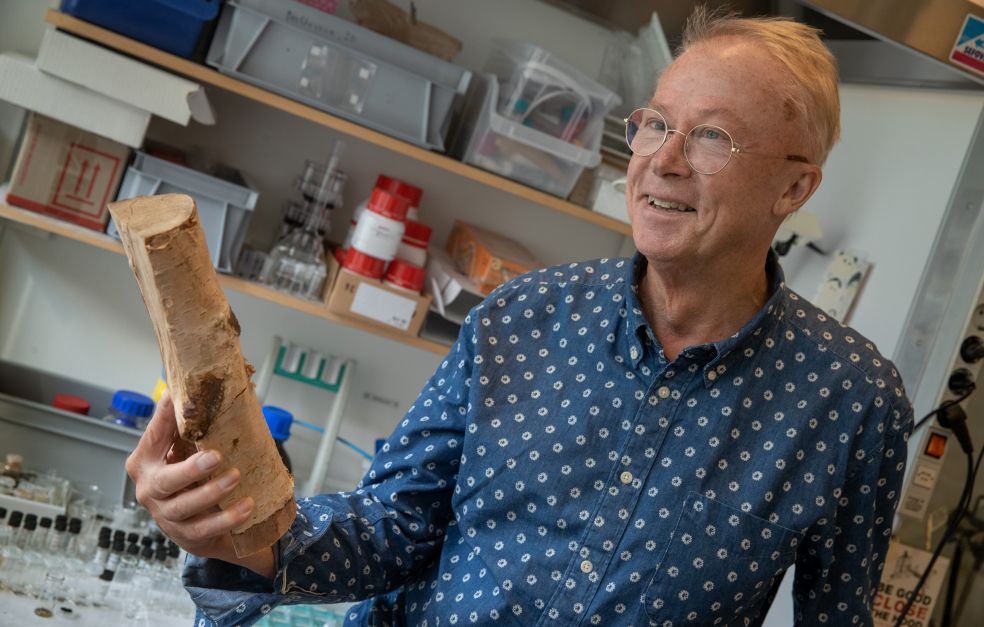Green electricity generation and storage of electric energy are two of the greatest future challenges we face. In Linköping, southern Sweden, Olle Inganäs is searching for new solutions in the interface between nature and electronics.
Olle Inganäs
Professor Emeritus in Biomolecular and Organic Electronics
Wallenberg Scholar
Institution:
Linköping University
Research field:
Energy conversion at the interface between electronics and biological systems
Professor Olle Inganäs has a chaise longue in his office. He usually takes a nap on it after lunch if, unlike today, no one is due to pay him a visit. He is past retirement age, but he does not give the impression of someone who needs to take a nap or to retire. Within a minute of meeting him, he has got the pleasantries over with and engaged photographer Magnus Bergström in a discussion of photoshopping and software filters used to make people look older or younger.
Once we get down to talking research, the conversation swings back and forth between projects old and new, solar panels, Chinese materials research, prehistoric animals with silicon shells, and energy systems of the future.
Inganäs is Professor Emeritus at the Department of Biomolecular and Organic Electronics at Linköping University, where he has “employed himself” part-time with his extended Wallenberg Scholar grant. He works in the field between electronics and biological systems and, among other things, has long been at the forefront of research on organic solar cells, i.e. solar cells made of plastic.
“I’ve never had so much money to do exactly what I want to with. Now, I can do something that is high risk - it may be a failure or a major breakthrough.”
Price and color trends favor organic solar cells
“Organic solar cells weigh much less and require much less material than traditional silicon-based solar cells. The requirements governing design, manufacture and use are quite different,” says Inganäs.
Among other things, organic solar cells can be made transparent, and in any color, so they can form part of a building’s décor, or be attached to the outside of windows. Integration of solar cells with building design is one of the topics Inganäs is working on at the moment. The products of his labors in the lab must be integrated with other materials without losing too much performance, and it must be possible to scale up production from square millimeters in the lab to square meters outside it.
Organic solar cells were usually seen as less expensive than silicon solar cells, but the price of traditional solar cells has fallen sharply in recent years. And organic solar cells are still less efficient, although their performance is steadily improving.
“But I recently attended a European industry meeting of traditional solar cell manufacturers, and noticed that a major trend is actually to make less efficient solar cells.”
Inganäs explains. Traditional black silicon solar cells are considered ugly. Manufacturers therefore now want to offer white or ochre-colored cells, which would be more attractive to city planners or residents.
“But this means a percentage of the light is reflected away, resulting in lower energy efficiency. They are making better-looking cells that are less efficient. Meanwhile, those of us working on organic solar cells can easily make them in different colors without losing performance – so we are meeting in the middle.”
Wooden batteries for storage on the spot
Inganäs’ other major project at present involves batteries made out of lignin. This is a material found in wood, which can be extracted from black liquor, a by-product of paper manufacture. Lignin contains plenty of carbon compounds belonging to a group called quinones, which act as energy carriers in many natural biological processes. Inganäs’ research team has found ways of modifying the lignin so it can be used to store electric energy in “wooden batteries”.
“We’re now in the process of scaling them up, finding materials that can be combined and do not cost too much. It’s a question of trying to learn everything about what we’re doing, so we can identify the problems that must be solved.”
The 2019 Nobel Prize in Chemistry was awarded to three scientists behind the lithium ion battery, which has had a revolutionary impact thanks to its ability to store large quantities of energy in a limited volume. This is why these batteries are used in portable electronic devices and in vehicles, which are mobile and have limited space.
“We’ll never achieve the energy density of lithium ion batteries. But what we are currently lacking is good, inexpensive technology for stationary storage of electricity where it is produced. So wind power, for instance can be stored from a storm for use on calm days, or daytime solar power for use at night. If there is room, and mass is not a critical factor, energy density doesn’t have to be so high.”
Inganäs hopes that by using organic materials from biological systems that can be broken down in nature without any risk of pollution, he will be able to develop environmentally friendly batteries that can play a part in our future energy supply. This could be by belonging to local grids, on which electricity is generated exactly where it is needed, by solar, wind, hydropower or ground thermal energy.
“I enjoy finding ways to use what nature has to offer to achieve refined functions. A while ago I found a table from the 1970s that said that charcoal is a fairly good conductor. I made my way to the nearest charcoal stack to take some readings, and found it was true. I was astounded. Now I plan to visit some more charcoal stacks to look into this further, and see if it can be put to use in some way. We shouldn’t underestimate the importance of discovery and surprise. I like to make jaw-dropping discoveries from time to time.”
Text Lisa Kirsebom
Translation Maxwell Arding
Photo Magnus Bergström






